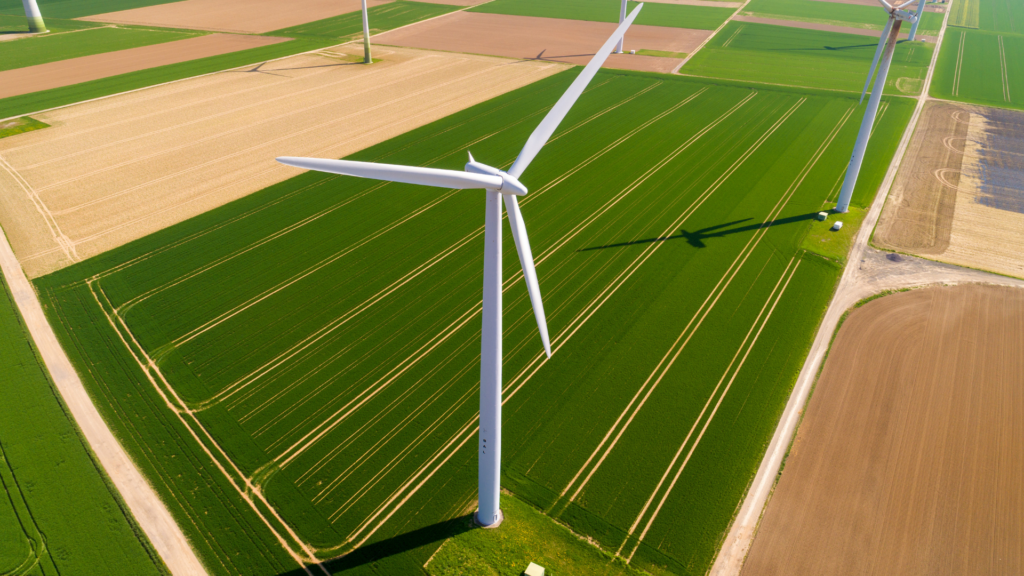24.06.2021 / News
Interview with Michael Lippert: EASE Vice-President Reflecting on the Association's Impact on Energy Storage in Europe
On 18 November 2020, The European Association for Storage of Energy (EASE) General Assembly elected Mr Michael Lippert, Director of Innovations and Solutions for Energy at Saft, to serve his 3rd term as the EASE Vice-President. Mr Lippert is currently in charge of product and market strategy for Saft’s Energy Storage Systems Business Unit. Additionally, he is Chairman of the Governing Board of “Batteries Europe” as well as “Batteries European Partnership Association”.
Mr Lippert, thank you very much for accepting this interview, it is a pleasure to hear the perspective of a person who covered the position of Vice-President for 7 years, and has been involved in the work of the Association since its creation. Looking at your involvement in the work of the Association, can you share with us why are the priorities set by the EASE, an association representing the whole value chain of energy storage, relevant for a battery manufacturer such as Saft?
At Saft we started our ESS business with lithium-ion (Li-ion) battery systems some 10 years ago, and today we are more convinced than ever about the critical role energy storage will play in our future electricity landscape enabling the efficient integration of renewables. It is obvious today that Li-ion batteries will play a major role among the different chemical, electrochemical, and mechanical storage technologies. However, the huge growth potential predicted for this market will only materialise in Europe if strong political will is able to create a level playing field for energy storage as a means of flexibility, and if technology development is able to meet ambitious cost and performance targets.
Therefore, EASE has played, and continues to play a role to make the purpose and added value of energy storage understandable to a huge community of stakeholders. EASE has worked with regulation authorities to remove market barriers for energy storage and to enable operators to generate revenues on existing and future energy markets. And, finally, the Association advocates for financial support for research and innovation in Europe.
This continues to be a tremendous work because the general knowledge and understanding of energy storage in general, and batteries in particular, is still rather poor. Everybody knows how a car or a bicycle works and everybody understands the purpose of a PV panel or a wind turbine. In contrast, when we started 10 years ago, there was basically no public awareness about the need for storage, and batteries were associated to engine starting and powering PC’s and mobile phones. Not to talk about the regulatory framework which was simply not thought to integrate energy storage as a player on energy, capacity or ancillary services’ markets.
Therefore, the work of EASE is paving the way for energy storage in Europe, and we obviously consider this is of high importance to Saft.
Following the European Commission’s proposal for a new Batteries Regulation on 10 December 2020, batteries have been at the centre of the European policy discussion. What is Saft’s position towards the new Regulation? Can you share some insights about the work done by EASE members to make sure that the interests of the whole energy storage sector are reflected in it?
Saft welcomes this initiative and has actively supported the shaping of its content. Enhancing the sustainability of the entire battery value chain is a “must” with regards to our global decarbonisation ambition. The industry is actively working towards lower carbon footprint, enhanced circularity and recyclability. These attributes will differentiate batteries “Made in Europe” in the future, and we count on the EU to create a regulatory framework that values such environmental performance. At Saft, we are actively contributing to multiple working groups on different topics, in order to translate a political will into meaningful and feasible regulation to the industry. This is not easy, of course, the devil lying in the detail. How to precisely determine the carbon footprint of a battery? How to define ambitious, global recycling efficiency targets for inherently different battery technologies? Shall we favour recycling to quickly recover critical raw materials, or extend product lifetime through second use?
We welcome and support the establishment of carbon footprint to characterise batteries for main applications. This criterion is totally aligned with the target of global GHG reductions, and it triggers improvements along the entire value chain from raw materials, through manufacturing, to end of life and recycling. We should focus on mainstream battery markets where high volumes, standardised designs and well-established use cases enable collection and sharing of reliable and meaningful data and for which regulation will achieve a measurable impact within a short time frame. For this, Saft has initiated the creation of an international standard to define common rules on how to determine such carbon footprint values, to ensure we can compare apples to apples in the future. At the same time, we continue to raise our voice if we see regulatory measures that are too difficult or costly to implement in comparison to the expected benefit, or if they lack precision or effectiveness with regards to the targeted objective. And we do this in close cooperation and discussion with other industrial and research members, within working groups organized by EASE and others.
Sustainability and second life of the energy storage technologies are two topics that are growing in importance. What do you consider as the main challenges that EASE will have to tackle over the coming years in this regard?
My answer is directly linked to the previous question: EASE should be a strong voice supporting a feasible, meaningful and effective regulation on batteries, and, beyond the high-level principles, discuss and accompany the implementation process, advocate continuous financial support for R&I needed in this area and be a forum where industry, research and policy makers debate about best practices and lessons learnt.
Of course, EASE, which represents the (stationary) energy storage sector, is not the only association concerned by this legislation, so a particular challenge lies in the coordination with other bodies representing, namely, transportation sectors or the raw material supply chain. Just to mention one example: we are discussing the so-called “battery passport”, a digital ID collecting battery data from the cradle to the grave, facilitating traceability and circularity. We all agree on the basic idea, however the practical implementation involves multiple players along the value chain, from raw materials to end-use industries such as car manufacturers, requires the combination of battery technology and digitalisation, and a coordinated approach on regulation and standardisation across Europe and across different industries. A challenge the entire ecosystem is concerned with, but which will be a major achievement for Europe.
I see another important role for EASE in the process of transposing to other storage technologies the principles of sustainability now being defined for batteries. So, I count on EASE to closely follow the process on batteries, and, as mentioned before, enable other sectors to benefit from best practices and lessons learnt.
In 2021, EASE is celebrating its 10th anniversary and appreciating the milestones already reached as an association representing energy storage in Europe. You have been a part of EASE since the beginning as one of the founding members. After 10 years of a successful work, can you share your expectations for energy storage sector in terms of the next innovation to come in the following decade?
Don’t ask me to predict any single, revolutionary technology to break through – not only am I not aware of such secrets, but I also strongly believe that we will see a multitude of storage technologies coming to maturity knowing that there is no “one-fits-it-all” solution. Mobility for example, one of the major achievements of the 20th century, does not rely on a single transport mode, does it?
I do think that in the next decade we will electrify whatever can be electrified, in particular in the transportation sector, with green electricity as a major primary energy source. Storage will be everywhere, at all levels of the energy supply chain and in the form of multiple carriers (including hydrogen), enabling us to (nearly) overcome the paradigm of electricity being the only form of primary energy which cannot be stored. Batteries are dominating the ESS scene right now -by the way a situation we did not really anticipate when we started EASE 10 years ago- because they benefit from economies of scale triggered by the EV sector and because they are ideally suited for short term storage of electricity, fed back to the system as electricity. We know that the massive adoption of wind and solar resources will require much higher amounts of storage, for longer periods (days, weeks, months) and coupled to other sectors like heat or hydrogen: a whole field of technical innovation to be explored and implemented. So, let’s fix a rendez-vous in 10 years and see where we stand!
Thank you Mr Michael Lippert for your interview and for your involvement in the European Association for the Storage of Energy!




